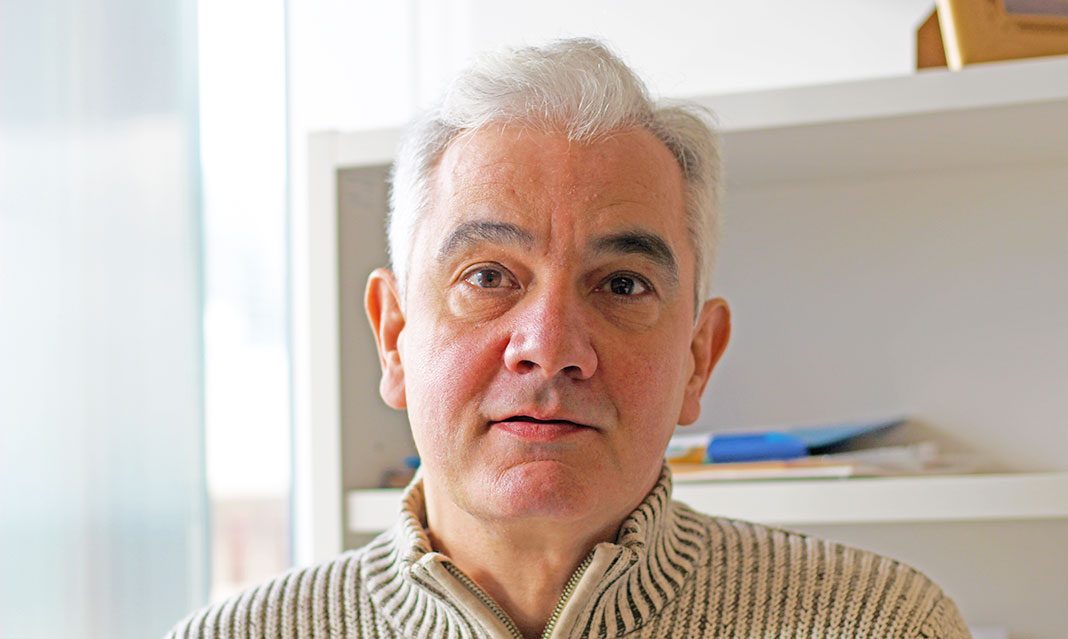The Medium recently had the chance to sit down with Dr. Esteban Parra, a molecular anthropologist and anthropology professor at the University of Toronto Mississauga (UTM).
Parra has had a long and far-reaching journey in science which began in one of the oldest universities in Spain, the University of Santiago de Compostela. He began his studies in biology and “like many students everywhere [he] discovered what [he was] really passionate about” while completing his undergraduate degree.
For Parra, the discovered passion was anthropology and genetics. After completing his Ph.D. degree, he completed a postdoctoral fellowship at a molecular anthropology lab in Spain. He was also a post-doctoral fellow in Rome, Italy, and Pittsburgh, USA, before joining UTM in 2002. Parra advises those interested in graduate studies to be willing to follow the opportunities that arise. For him, it has been “incredibly exciting” to see how the UTM campus has changed and grown in the past seventeen years. “We have been attracting incredible new faculty, not only to anthropology but to many other programs, which has been nice to see,” he says.
Parra has continued his research at UTM. One of the focuses of his research is to identify some of the genetic risk markers of traits and diseases such as obesity, type 2 diabetes, cardiovascular diseases, and cancer. This is done using a genome wide association study to identify variants that are associated with these traits. Parra uses a consortia—a large group of samples—to have access to as much data as possible. The more samples there are, the higher chance there is of finding a common link between the genetics of an individual and the ailments they suffer from.
Parra does mention that genetics are often not the only cause. For diseases such as cystic fibrosis, one’s genes are the primary factor in causing the condition. These diseases are termed Mendelian disorders. However, for complex conditions like obesity and diabetes, one’s environment and lifestyle play a huge role. “Modifications in your lifestyle, your diet, and physical activity, are the best way” to combat conditions such as obesity and diabetes, said Parra.
An exciting development Parra is looking forward to is the advancement of precision medicine. Precision medicine—or “personalized” medicine as it is sometimes referred to—is when an individual’s genetic profile can be used to develop a tailor-made treatment program for the individual. Precision medicine is a new field because it has only recently been made possible by technological advancements, which have also lowered the cost of genetic studies dramatically, and, in turn, opened many doors in the field of genetics.
Parra emphasizes the importance of collecting as much data as possible. “The best way to approach this is to collaborate with other scientists […] there are some studies that are done with many participating research groups, and they have been able to use samples of up to a million individuals.”
One of the advantages of collecting a large number of samples is balanced representation of diverse ethnic groups, which for Parra is very important. He explains that genetic studies in the past have primarily been conducted in European countries which is problematic for the future of precision medicine. “When you primarily work in just one population group, it may not be as helpful for the rest of the world,” he says.
In fact, for almost all non-European groups, underrepresentation is a significant issue which is only improving slowly. Underrepresentation can be attributed to a variety of factors such as biasness and the location of the research groups who generally choose to perform their research in their own areas. Parra encourages those conducting research to overcome these factors since “it is absolutely critical to do more studies and represent these groups.”
Parra has contributed in his own right to the growth of the sample pool. One of the studies he participated in was part of a large collaboration with researchers from around the world. Together, the researchers collected samples from over eighteen thousand individuals of various ethnicities. Since very few studies had been previously conducted on non-European populations, they focused on looking for genetic markers of obesity in children. Ultimately, they discovered a new locus—a fixed position on a chromosome where a genetic marker is located. The locus they had discovered had not been found in significant numbers in purely European groups, but appeared consistently in the diverse sample pool, exemplifying the need for more diverse sources.
Despite the shortcomings, Parra is hopeful about the future of the field and its growth. He encourages greater awareness of the disparity of samples and urges efforts to rectify the misrepresentation. He is immensely passionate about anthropology and genetics and finishes off by stating, “DNA is an open book—you just need to know how to read it.”



